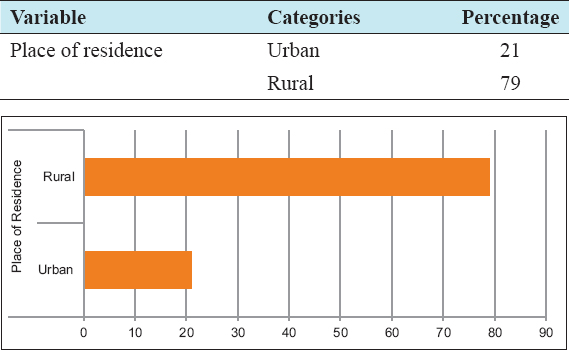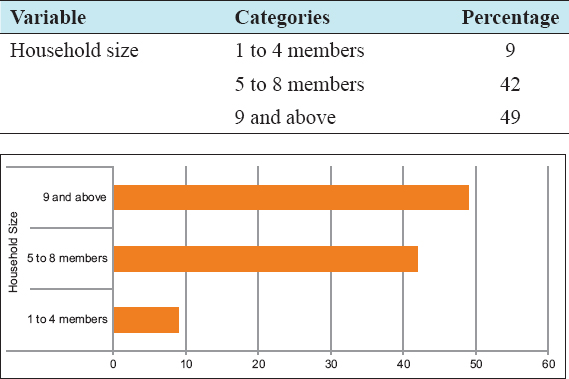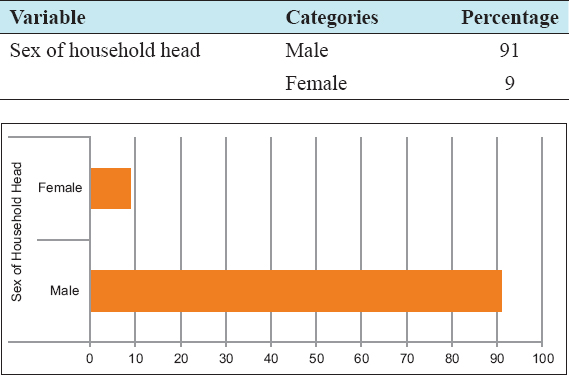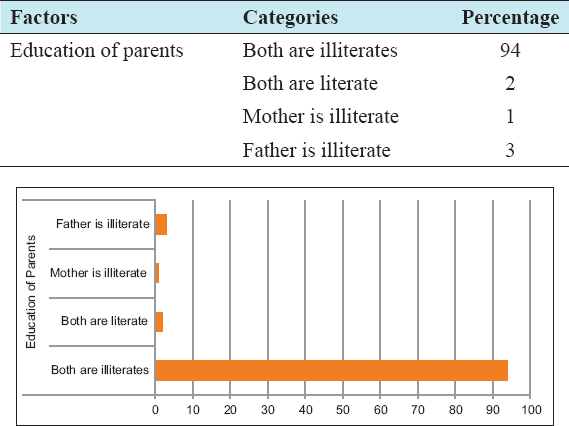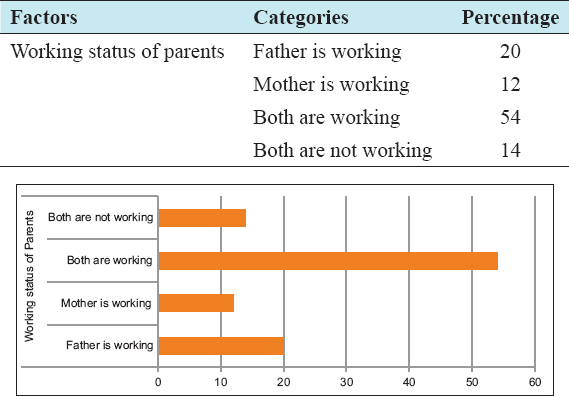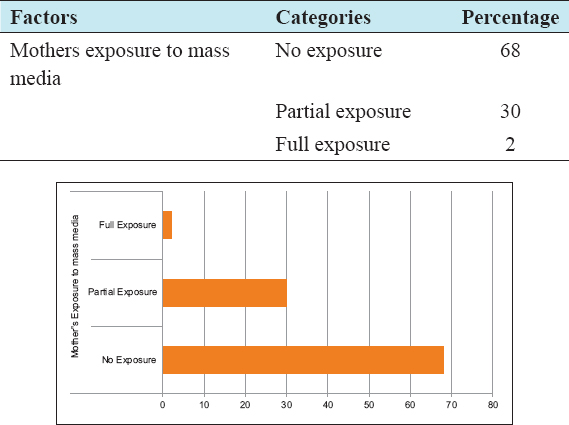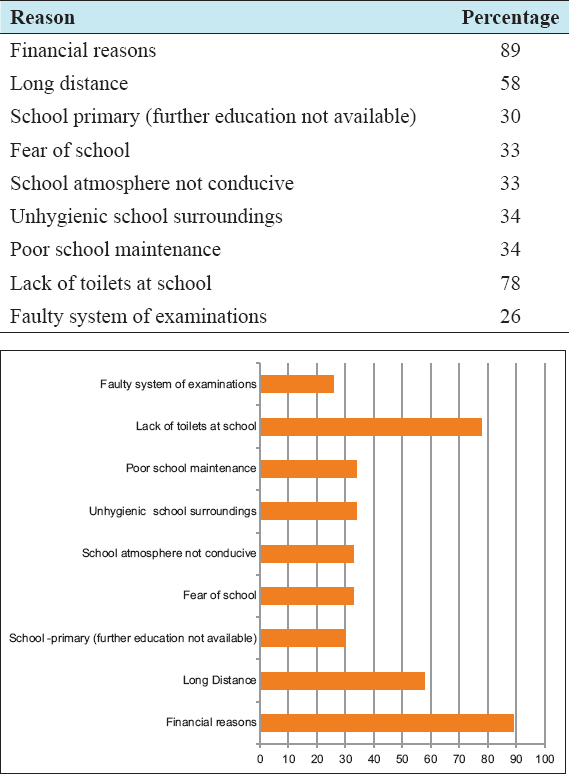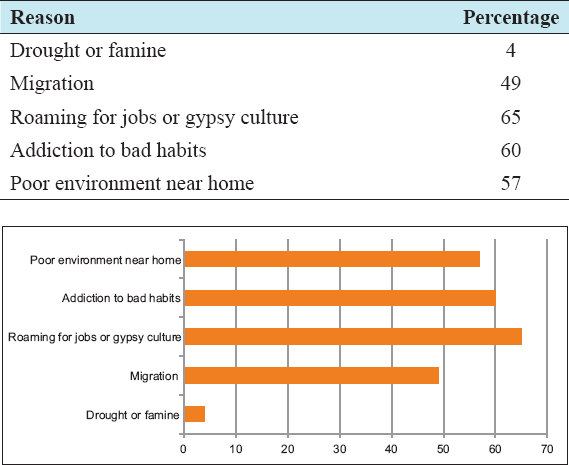INTRODUCTION
According to data put out by the Ministry of Human Resource Development, the national dropout rate at the primary level was 4 has surged. There are many reasons why a child might drop out from school, which range from migration of families and child marriage to lack of school infrastructure such as drinking water and toilets. Poverty, availability, and accessibility are three big reasons[1-3] why children drop out of school. Another reason why drop rates rise after Class V is that this is the stage when a child reaches the age - 10–11 years - when it is considered suitable for induction into child labor. The role of the teacher, too, is critical, as dropouts often speak of teachers beating them. Before schools can tackle the problem of school dropouts, they need to know who is considered a dropout and who is a graduate. Numerous definitions of dropouts appear in the educational literature, and the lack of a common definition and standard data collection procedures have left educators and policymakers with little accurate and reliable information about dropouts. Research shows that leaving school early is the outcome of a long process of disengagement from the school;[4,5] dropout is preceded by indicators of withdrawal (e.g., poor attendance) or unsuccessful school experiences (e.g., academic or behavioral difficulties) that often begin in elementary school. Overt indicators of disengagement are generally accompanied by feelings of alienation, poor sense of belonging, and a general dislike of school. Dropout statistics can be used to monitor the success of schools and identify students who need special attention. In addition, statistics would provide an overall indication of the success of the educational system. To make these assessments, however, data must be collected according to the same definitions, using the same procedures, and over the same period of time.[5-8] Even those who sit for the final examinations and received ungraded results are regarded as learners who dropout. Education is a key to develop the economic, social, scientific, and political institutions of nation states.[9-14] Hence, access to education is at the center of the development agenda of most low-income countries. Students often drop out of high school and college due to apathy or boredom [Table 1]. High school students often report that academic content is not interesting and they do not have a personal connection with their teachers. High school dropouts and college students may have other alternatives that seem more appealing, such as getting a job or starting a career. High school students who are not interested in going to college may not see the value of a high school education. Boredom is a problem that must be addressed by students, parents, school faculty, and education boards to see if better course offerings and more student-teacher interactions would help [Tables 2 and 3]. Students often drop out because they struggle academically and do not think that they will have the GPA or credits necessary to graduate.[15-19] Some high school students do notwant to risk failing, which could mean summer school or another year of high school. College students’ academic problems often lead to a loss of scholarships or grants and may result in having to repeat classes to earn needed credits. The lack of parental involvement is a problem that often leads to higher dropout rates, especially with high school students. Parents play an important role when it comes to high school attendance [Table 4]. High school dropouts often have parents who were not engaged or concerned with their academic success. If a parent does not encourage her child to stay in school, show interest in classes and teachers, communicate with administration, or pay attention to homework assignments, the child might not see any reason to follow through with the coursework. Some high school students and college students drop out because they want to work to earn money.[20] They may need money to finance a car, pay for auto insurance, buy clothes or electronics, pay for housing, or support unhealthy addictions. Most high school and college students do not have the time and energy to go to school all day, complete homework assignments, and still work enough hours to support lofty expenses [Table 5]. Dropouts who are concerned about their immediate, short-term financial situation may see a full-time job as the best way to maintain the lifestyle they desire [Tables 6 and 7].
Table 1: Percentage of school dropout by household area
Table 2: Percentage of school dropout by household size
Table 3: Percentage of school dropout by sex of household head
Table 4: Percentage of school dropout by landholding
Table 5: Percentage of school dropouts by selected parental characteristics
Table 6: Percentage of school dropouts by working status of parents
Table 7: Percentage of school dropouts by mothers exposure to mass media
METHODS
This research is a meaningful and purposeful study that included a school-level inquiry and a household level inquiry. Attitude and opinion surveys were conducted with teachers, parents, and school dropouts. Information was also attained regarding the facilities available which have a marked effect on schooling.[21-25] Besides, supplementary information was collected from the subjects and their families. Purposive sample selection was followed to target the school dropouts [Tables 8-10]. Subjects included 70 school dropout children, boys as well as girls between 7 and 16 years of age, from varied sociodemographic profiles. The sample selection was confined to Mohali. The first step included sample selection, and then, rapport was formed with the subjects, their families, and teachers and school authorities (where they used to study before withdrawing their schooling).[26-30] Planned as well as clinical interview and observation method was followed. A performa stating the life events was used during the interview process.
Table 8: Reasons of school dropout related to students
Table 9: Reasons of school dropout related to parents
Table 10: Reasons of school dropout related to teachers
Sampling
RESULTS and CONCLUSION
The main reason of the school dropout as related to the child was the fact that he/she has to work and earn for the family. The main reason of the school dropout as related to the parents/family was the monetary issue. The main reason of the school dropout as related to the teacher was discrimination and cruelty on her/his part. The main reason of the school dropout as related to the school was unaffordability and lack of toilets in schools [Tables 11 and 12]. The main reason of the school dropout as related to the environment was dawdling followed by addiction, poor environment of home, and migration.[31-35] It was notified that the most prominent reasons for the school dropout were poverty, parental discord, denial of school for girl child, financial reasons, illiteracy among parents, too many kids at home, rearing or caring for siblings, gambling/alcoholism in father, stress, lack of toilets at school, doing parents jobs, and going for work.
Table 11: Reasons of school dropout related to the school
Table 12: Reasons of school dropout related to the environment

